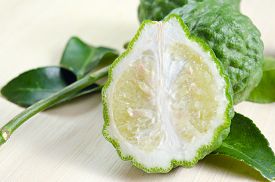









Quality and Purity - 2 - AromaProfiles
There are several problems with this, and other, methods of analysis. As we have already noted elsewhere, each machine response somewhat differently, and records differently, so fingerprints cannot be accurately compared one machine to another. That means that a library of characteristics fingerprint patterns has to be built up, for each machine, so that there are accurate fingerprints against which the tested material can be compared.
However what tends to happens that the fingerprint is compared with one of the set of 'standard' fingerprints used as a reference by the industry, so the idiosyncracies of each machine are not always taken into account, Also, interpreting the fingerprint is done by humans, who can take different opinions on the matter. Nevertheless, the GC can help to a certain extent to identify adulteration of essential oils. For example, a common adulterant is linalool, an alcohol found in many essential oils.
Linalol, produced artificially, contains traces of other compounds - dihydrolinalol shows up on the fingerprint, it shows the oil has been adulterated. However, it is also possible to add a naturally produced linalol, extracted from another plant, and this form of adulteration cannot be detected by this method.
Once the essential oil components have been separated by the GC, there are other machines which can further help identify them, including mass spectrometers and infrared spectrometers. However, essential oils contain hundreds of components and not all of them have been identified by science yet. Also, of course, it means that the complete essential oil cannot be reproduced exactly in a lab).
if one were to apply all the known technology to an essential oil to be analysed, although one couldn't get a complete picture, a fair enough picture would emerge - of its age and chemical composition. Albeit limited. However, this process would be very expensive. What often happens instead is that a substance is tested for the main constituents that are supposed to be in it. 'Eucalyptus essential oil' will be tested to see whether it has the correct proportions of eucalyptol and 1,8-cineol for example. However, this doesn't tell us much about the tested material, which might even be an entirely man-made composition.
The term 'essential oil' can, be applied to a liquid that has nothing whatsoever to do with nature. Also, bottles can be labelled 'essential oil' but bear no relation to what description is given on the bottle - 'tuberose absolute' could, in fact, be a mixture of other absolutes and essential oils cleverly blended to smell like tuberose. It is also possible to buy bottles labelled 'aromatherapy essential oils' which have a few drops of essential oils blended in with carrier vegetable oils. In some cases these mislead people into thinking they are buying undiluted essential oils.
Most essential oils are distilled from the plant material which is placed in a still and exposed to steam, forced through them from below, which makes the volatile aromatic molecules detach from the plant. These rise with the steam and after condensation, turn into liquid form. At this point, the essential oil is separated from the water - as it is lighter than the water it is siphoned off the top.
Citrus essential oils are produced by another method known as expression which involves highly-sensitive machines extracting the essential oil from the rind, without using heat. In this process, whatever biocides were used on the fruits are inevitably included with the essential oils.
All these aspects of cultivation and extraction have to be considered by wholesale purchasers of essential oils, who are more and more coming to the conclusion that it is better to lease your own fields, so control over growing methods can be maintained, and the biocide eliminated. Ultimately, they all-know the end user would prefer to use organically grown essential oils, and by collectively pressing this point home we, the consumers, can pressurize suppliers to aim for the highest purity.
Professor George Dodd at the olfaction research department at Warwick University has developed an electronic nose capable of picking up and identifying small components of aroma. Perhaps in the future this will be a tool in essential oil analysis but u8ntil then, despite all the latest technological developments in essential oils analysis, the human nose is still the most sensitive aroma-detector going, and it is sometimes still used instead of a machine, at the receiving end of the GC column.
The best way to assess an essential oil is to smell it but, like the GC machines, each of us has to build up our own library of aromas. Obviously this takes time, but the powers of discrimination should soon build up providing you have access to pure fresh essential oils.
Reference: The Fragrant Mind: Valerie Ann Worwood
